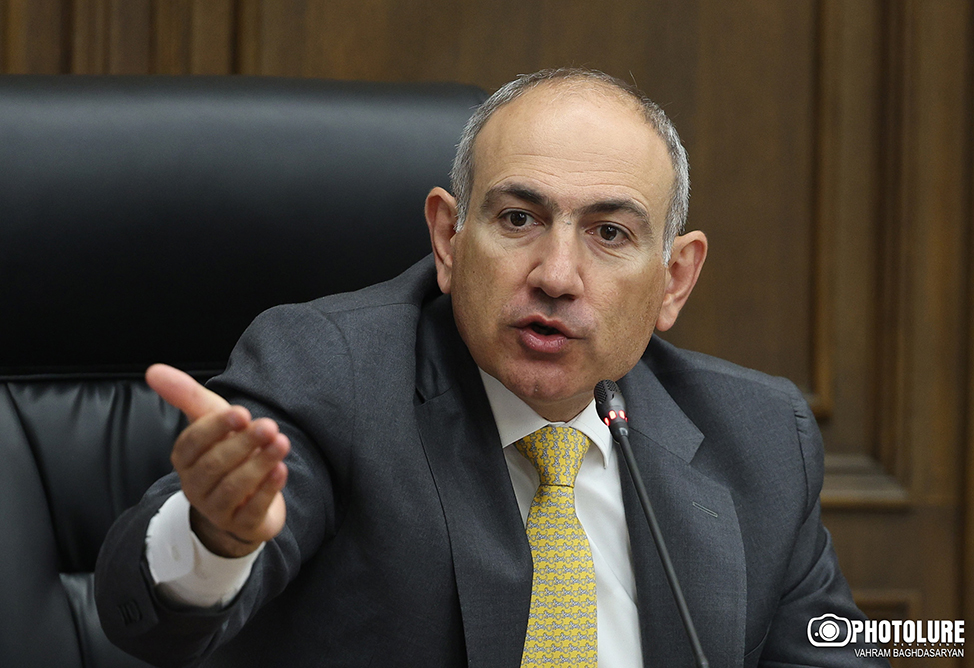Armenian, Azerbaijani foreign ministers ready to meet - OSCE Minsk Group co-chairs
18.10.2019,
14:23
The Co-Chairs of the OSCE Minsk Group (Igor Popov of the Russian Federation, Stéphane Visconti of France, and Andrew Schofer of the United States of America), together with the Personal Representative of the OSCE Chairperson-in-Office (PRCIO) Andrzej Kasprzyk, issued a statement on Thursday.

YEREVAN, October 18. /ARKA/. The Co-Chairs of the OSCE Minsk Group (Igor Popov of the Russian Federation, Stéphane Visconti of France, and Andrew Schofer of the United States of America), together with the Personal Representative of the OSCE Chairperson-in-Office (PRCIO) Andrzej Kasprzyk, issued a statement on Thursday.
They reported that they have met with Prime Minister Nikol Pashinyan in Yerevan on 15 October and with President Ilham Aliyev in Baku on 17 October, and held consultations with the respective Foreign Ministers and Defence Ministers in both capitals.
During their visit, the Co-Chairs also met with the de facto authorities in Nagorno-Karabakh. In Baku, the Co-Chairs met with the Chairman of the Azerbaijani Community of Nagorno-Karabakh. While in Nagorno-Karabakh, the mediators were briefed on humanitarian issues by the local representative of the International Committee of the Red Cross.
The two leaders briefed the Co-Chairs on their recent conversation during the CIS summit in Ashgabat and presented their ideas on how to advance the settlement process. The Co-Chairs welcomed the prospect of implementing specific humanitarian and security measures to prepare the populations for peace and reduce tensions.
The Co-Chairs once again stressed the critical importance of monitoring missions led by the PRCIO, in accordance with his mandate and longstanding practice. The Co-Chairs called on the sides to continue to support fully the activities of the PRCIO and his team and to ensure that any obstacles potentially interfering with monitoring missions are removed immediately.
The Foreign Ministers confirmed their intention to meet again under Co-Chair auspices before the end of the year.
The Co-Chairs will travel soon to Vienna to brief the OSCE Permanent Council and the members of the Minsk Group.
Karabakh conflict broke out in 1988 when Karabakh, mainly populated by Armenians, declared its independence from Azerbaijan. On December 10, 1991, a few days after the collapse of the Soviet Union, a referendum took place in Nagorno-Karabakh, and the majority of the population (99.89%) voted for secession from Azerbaijan.
Afterwards, large-scale military operations began. As a result, Azerbaijan lost control over Nagorno-Karabakh and the seven regions adjacent to it. Some 30,000 people were killed in this war and about one million people fled their homes.
On May 12, 1994, the Bishkek cease-fire agreement put an end to the military operations.
Тalks brokered by OSCE Minsk Group are being held over peaceful settlement of the conflict. The group is co-chaired by USA, Russia and France. 0---
They reported that they have met with Prime Minister Nikol Pashinyan in Yerevan on 15 October and with President Ilham Aliyev in Baku on 17 October, and held consultations with the respective Foreign Ministers and Defence Ministers in both capitals.
During their visit, the Co-Chairs also met with the de facto authorities in Nagorno-Karabakh. In Baku, the Co-Chairs met with the Chairman of the Azerbaijani Community of Nagorno-Karabakh. While in Nagorno-Karabakh, the mediators were briefed on humanitarian issues by the local representative of the International Committee of the Red Cross.
The two leaders briefed the Co-Chairs on their recent conversation during the CIS summit in Ashgabat and presented their ideas on how to advance the settlement process. The Co-Chairs welcomed the prospect of implementing specific humanitarian and security measures to prepare the populations for peace and reduce tensions.
The Co-Chairs once again stressed the critical importance of monitoring missions led by the PRCIO, in accordance with his mandate and longstanding practice. The Co-Chairs called on the sides to continue to support fully the activities of the PRCIO and his team and to ensure that any obstacles potentially interfering with monitoring missions are removed immediately.
The Foreign Ministers confirmed their intention to meet again under Co-Chair auspices before the end of the year.
The Co-Chairs will travel soon to Vienna to brief the OSCE Permanent Council and the members of the Minsk Group.
Karabakh conflict broke out in 1988 when Karabakh, mainly populated by Armenians, declared its independence from Azerbaijan. On December 10, 1991, a few days after the collapse of the Soviet Union, a referendum took place in Nagorno-Karabakh, and the majority of the population (99.89%) voted for secession from Azerbaijan.
Afterwards, large-scale military operations began. As a result, Azerbaijan lost control over Nagorno-Karabakh and the seven regions adjacent to it. Some 30,000 people were killed in this war and about one million people fled their homes.
On May 12, 1994, the Bishkek cease-fire agreement put an end to the military operations.
Тalks brokered by OSCE Minsk Group are being held over peaceful settlement of the conflict. The group is co-chaired by USA, Russia and France. 0---



